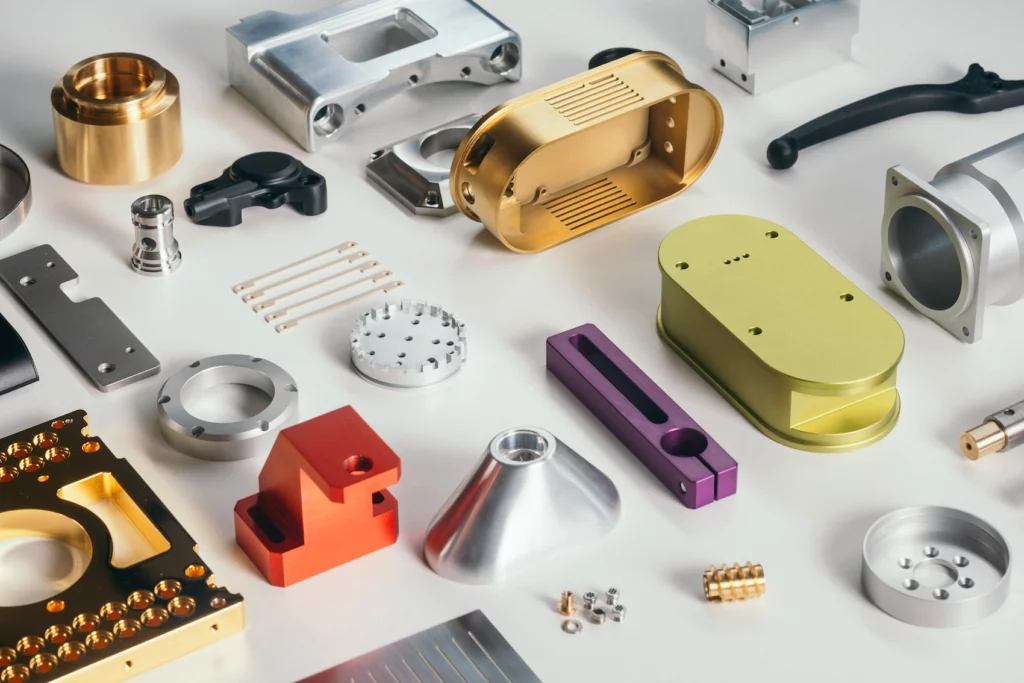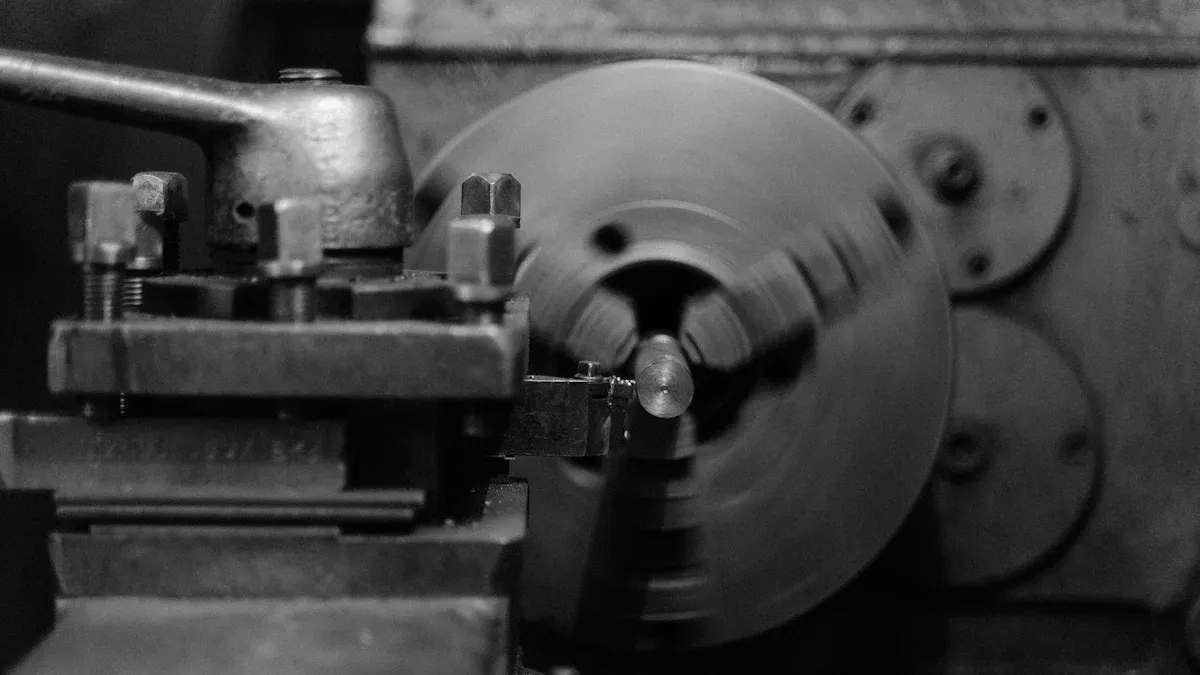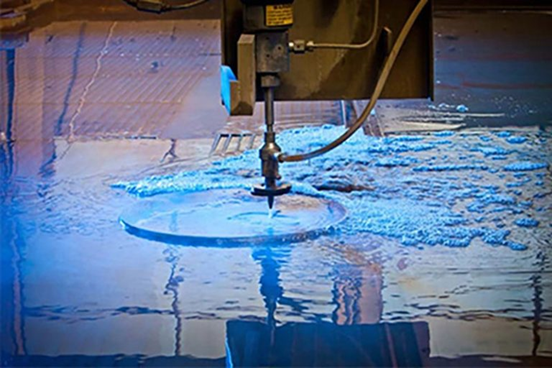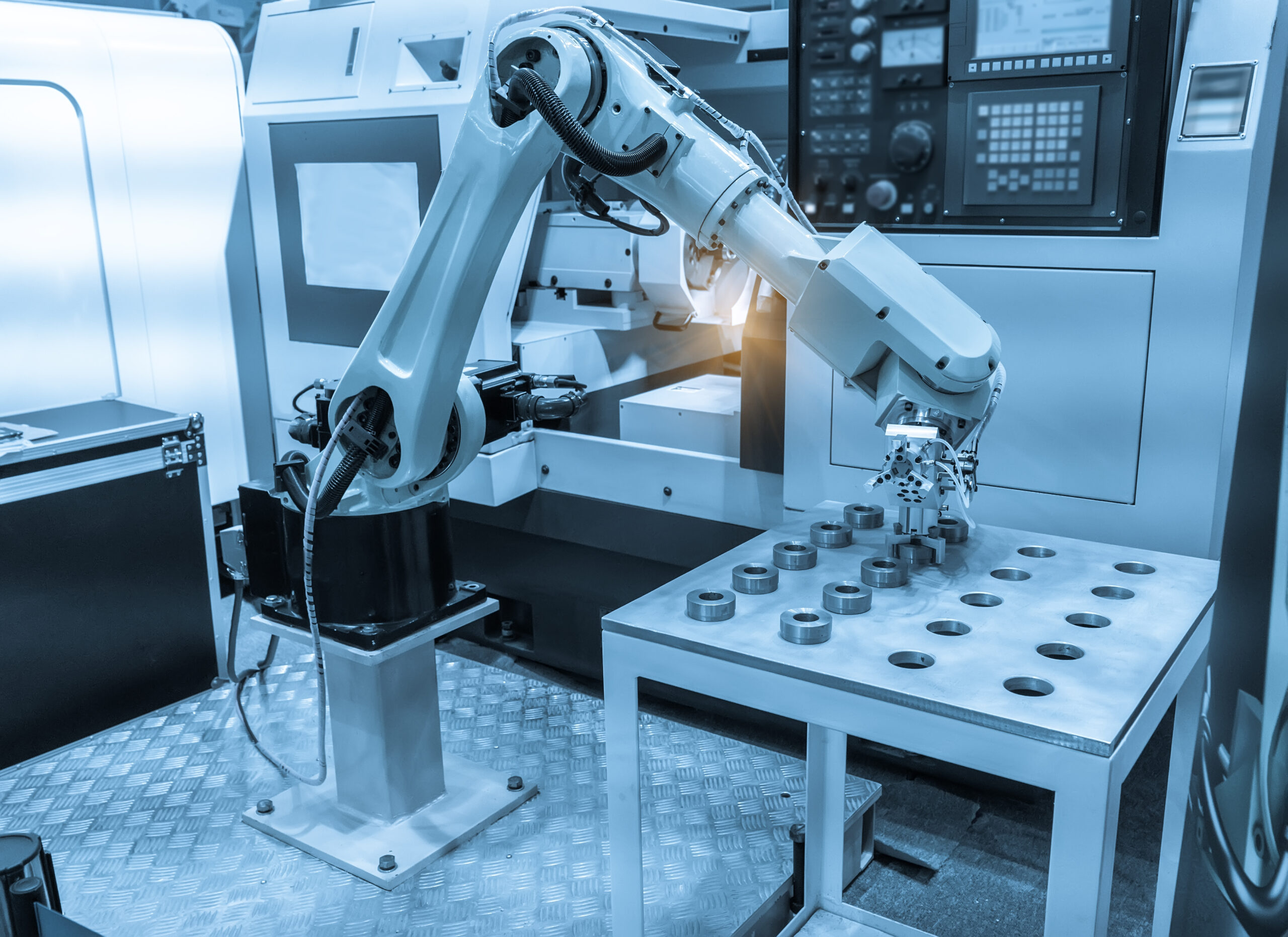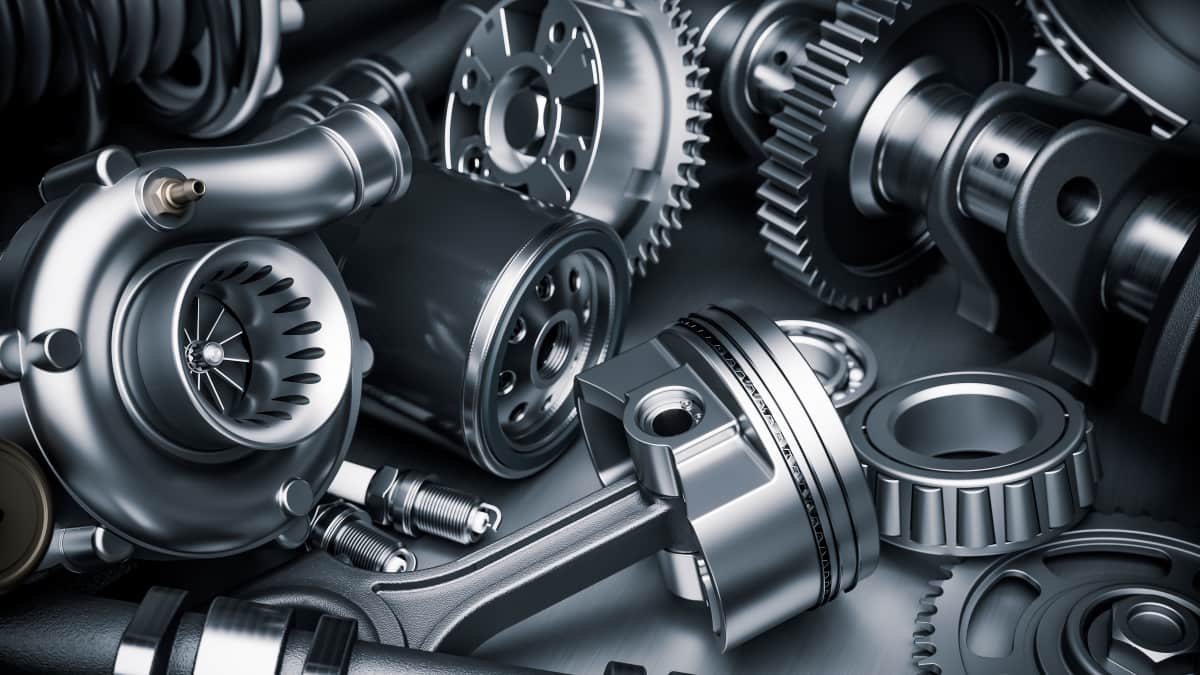What is Powder Coating Finish?
Powder coatings are a type of dry, free-flowing coating material. Its application principle is completely different from that of traditional liquid coatings: it is usually electrostatically sprayed and then cured by heating or ultraviolet light. Thanks to its thermoplastic or thermosetting polymer properties, powder coating can form a thicker, tougher, and more durable surface than traditional paint.

Although powder coating is widely used for metal parts, the emergence of new processes such as UV curing has reduced the reliance on high temperatures and long-term baking, thus expanding its application fields to heat-sensitive materials such as plastics, MDF boards, and solid wood.
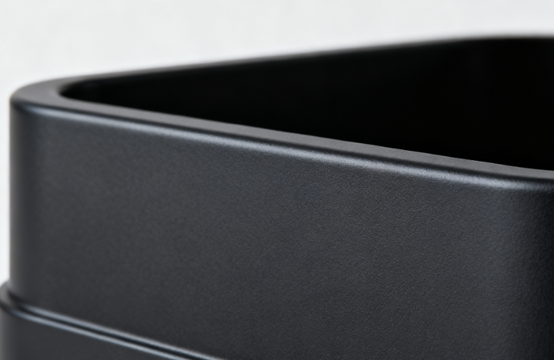
How Does Powder Coating Finish Work?
Pretreatment
Pre-treatment of components is the foundation and key step of the entire process. The aim is to thoroughly remove all contaminants such as oil stains, rust, oxide scale, and dust from the surface of the workpiece, and to form a conversion film that can significantly enhance the adhesion and corrosion resistance of the coating.
Common processes include degreasing, water washing, surface adjustment, chromate treatment, etc., and finally water washing and drying again. If the pretreatment is not thorough, any residual dirt will directly cause serious quality problems such as craters, poor adhesion, blisters, and even early failure of the coating. Pretreatment determines the firmness of the coating’s bond with the substrate and its long-term durability.
Electrostatic Spray Application
The workpieces that have undergone pretreatment and are completely dried are sent into the spray booth. A specialized electrostatic spray gun charges the powder coating. The gun’s high-voltage nozzle gives the powder a negative charge, while the grounded workpiece carries a positive charge.
Due to electrostatic attraction, the powder is evenly applied to the workpiece’s surface. Any oversprayed powder is collected and recycled, achieving a utilization rate typically over 95%—significantly higher than traditional liquid coatings.
Curing
The sprayed workpieces are sent into the curing furnace and maintained at the set temperature for a specific period of time. This heat first melts the powder into a smooth film. Then, a chemical reaction causes the coating to cure, forming a hard, durable, and stable surface.
Insufficient curing can lead to a decline in the physical properties of the coating, while excessive curing may cause the coating to age, become brittle or change color. Therefore, precise control of temperature and time is of vital importance.
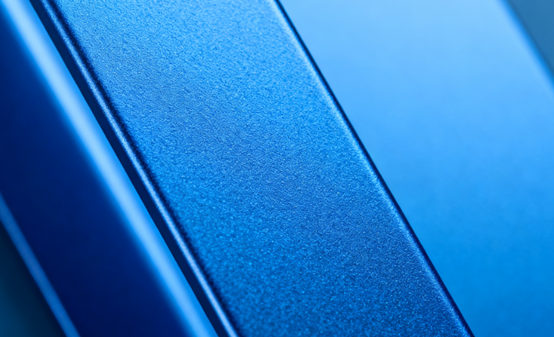
Cooling and Inspection
The cured workpiece is removed from the oven and cooled to room temperature in a clean, dust-free area, taking care to avoid rapid cooling. After the workpiece has completely cooled down, it enters the final quality inspection stage.
The inspection contents include, but are not limited to: the appearance of the coating, film thickness, adhesion, impact resistance, and ensuring complete coverage of the coating without any missed spraying. Only workpieces that pass all inspection standards can be packaged for storage or put into use.
Common Materials for Powder Coating Surface Finish
Thermosetting Powder Coatings
Epoxy
- Strong Adhesion, Excellent Chemical and Corrosion Resistance
- Poor UV Resistance; Prone to Yellowing Outdoors
Polyester
- Good Weatherability, UV Resistance, Excellent Color Retention
- Outstanding Mechanical Properties
Thermoplastic Powder Coatings
PE
- Excellent Chemical Resistance and Insulation
- Good Abrasion and Water Resistance; Unsuitable for High-Temperature Environments
PVC
- Good Chemical Resistance and Flexibility
- Moderate Weatherability; Prone to Thermal Decomposition
Nylon
- Exceptional Abrasion, Impact, and Chemical Resistance
- Tough Coating with Self-Lubricating Properties
PP
- Lightweight, Heat and Chemically Resistant
- Relatively Poor Adhesion
Benefits of Powder Coating Finish
Eco-Friendly
Powder coating uses no solvents at all. Its composition is 100% solid powder, so there is almost no emission of volatile organic compounds during the production and use process. This fundamentally eliminates the pollution to the atmosphere caused by solvent evaporation in traditional liquid coatings.
At the same time, powder coating also creates a safer working environment for operators, greatly reducing the health risks caused by inhaling harmful solvent vapors. The oversprayed powder can be recycled, further reducing the generation of waste.

Superior Performance
Powder coatings create a tough, durable film that is better than liquid coatings. It can be applied thickly in one step. This dense coating strongly adheres to the material, providing great impact, wear, and corrosion resistance.
Whether it is the chemical resistance of epoxy resin or the excellent weather resistance of polyester resin, powder coatings can provide long-lasting protection for the substrate, significantly extending the service life of the product, and are particularly suitable for harsh indoor and outdoor environments.
High Efficiency
Powder coating is highly efficient. It achieves a material utilization rate of over 95%, with overspray being recyclable to minimize waste. Furthermore, it typically requires only a single application to reach the desired thickness, speeding up production by removing the need for multiple coats and drying waits.
Although the initial equipment investment in powder coating may be relatively high, considering its material utilization rate, energy consumption reduction and labor cost savings, its long-term overall cost-effectiveness is very prominent.
Excellent Finish
Thanks to the electrostatic adsorption and melt leveling properties, powder coatings can form a uniform, smooth and non-sagging high-quality surface. Whether it is a flat, textured, sandblasted, or metallic effect, a highly consistent appearance can be achieved.
Traditional liquid coatings are prone to sagging when applied on vertical surfaces, while powder coatings rely on electrostatic adsorption before curing and do not have this problem.
Simplified Operation
The storage, transportation, and operation of powder coatings are all more convenient. It does not have the storage stability problem of liquid coatings and usually only needs to be stored at room temperature and dried.
The powder coating process is easy to achieve a high degree of automation, with a high degree of production line integration, which can ensure stable product quality and reduce human operation differences. In addition, powder coatings themselves do not have proportioning errors, ensuring the consistency of color and performance for each batch of products and simplifying the quality control process.
Disadvantages of Powder Coating Finish
Limited Substrate Compatibility
The curing process usually requires staying in an oven at 160°C to 200°C for 10 to 20 minutes. Such high temperatures and duration can cause wood, certain plastics (such as ABS, PP), composite materials, and components with rubber or precision electronic components to deform, melt or fail functionally.
High Initial Investment
The powder coating process requires a series of large-scale professional equipment, including pretreatment tanks, spray booths, high-pressure electrostatic spray guns, powder recovery systems, and large curing ovens. These devices are not only expensive in themselves, but also take up a large area and have high requirements for factory infrastructure.
Challenges with Complex Geometries
There is a “Faraday cage effect” in electrostatic spraying. Charged powder particles have difficulty entering deep depressions, inner corners or shielded areas because the electrostatic field is very weak in these places. This will cause the coating on these parts of the workpiece to be too thin or even missed.
Difficult On-Site Repair
If the coating is damaged during transportation or installation, it cannot be simply patched up locally with a brush-like paint. The standard repair method requires the workpiece to be sent back to the production line and undergo a complete process of pretreatment, masking, spraying, and curing again, which is highly impractical.
Tips for Powder Coating Surface Finish
Foundation Preparation
After pretreatment (cleaning, phosphating, etc.), do not judge merely by the naked eye. Put on clean white cotton gloves or finger cots and gently wipe the surface of the workpiece. If there are no stains on the gloves, it indicates that the cleaning is up to standard.
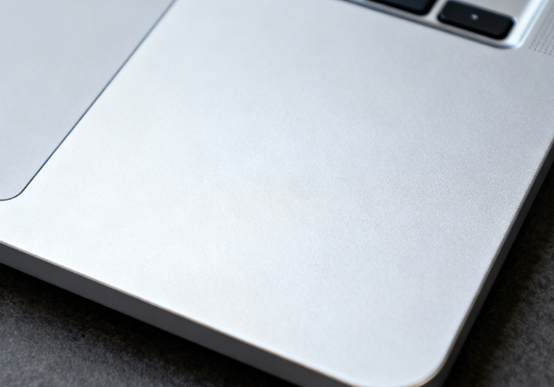
Spray Control
For workpieces with deep holes or complex geometries, a setting of “high voltage and low air pressure” is adopted. High voltage can enhance the force of the electrostatic field, helping the powder overcome the Faraday cage effect and enter the concave Angle. Low air pressure can slow down the flow rate of powder, prevent it from rebounding on the working surface, and thereby increase the powder feeding rate.
Precise Curing
The set temperature of the curing oven is not equal to the actual temperature reached by the workpiece. The furnace temperature tracker is used to pass through the curing furnace along with the workpiece to precisely measure the real-time temperature curve of the workpiece inside the furnace, including heating, constant temperature and cooling.
Tackling the Faraday Cage Effect
Ensuring that the workpiece is absolutely well grounded is the primary condition for overcoming the Faraday cage effect. The grounding resistance should be less than 1 megohm. Any paint layer or rust on the contact point will damage the grounding, resulting in poor powder coating. For extremely complex workpieces, a Tribo Gun can be considered for use.
Powder Management
Recycled powder must be mixed with new powder in a certain proportion for use, and 100% recycled powder cannot be used. Because the particle size distribution and charging performance of the recycled powder have changed, using it all will lead to poor leveling of the coating and an increase in orange peel.
Applications of Powder Coating Finish
Architecture
Powder coating provides crucial weather resistance, UV resistance, and anti-corrosion protection for building components, while offering a wide range of color and texture options to meet aesthetic needs.
Application
- Aluminum profiles/curtain walls: Doors and Windows, glass curtain wall support frames, shutters. This is one of the largest application markets for polyester powder coatings.
- Steel structures: Building steel structures, Bridge guardrails, Grid structures for airports.
Appliances
Powder coatings can provide durable, aesthetically pleasing, and easy-to-clean surfaces for household appliances while meeting strict food safety and hygiene standards.
Application
- Household appliances: Refrigerators, Washing machines, Microwave ovens, Water heater shells.
- Kitchen appliances: Ovens, Stoves, Range hoods (internal components are often made of epoxy resin to resist the corrosion of cooking fumes).
- Electronic products: Computer cases, Server cabinets, Heat sinks.
Automotive
In the automotive field, powder coatings are used not only for highly decorative appearance parts but also for functional corrosion-resistant and wear-resistant components.
Application
- Components: Wheels, Engine mounts, Chassis parts.
- Interior and functional components: Steering wheel, Dashboard frame, Seat adjustment slide rails.
Household Goods
Powder coating offers metal furniture a wealth of design possibilities and strong physical protection, making it suitable for a wide range of environments, from indoor to outdoor.
Application
- Indoor furniture: Metal tables, Chairs, Filing cabinets, Storage racks, Bed frames, Park benches
- Household items: Metal lamps, Picture frames, Coat racks, Toolboxes
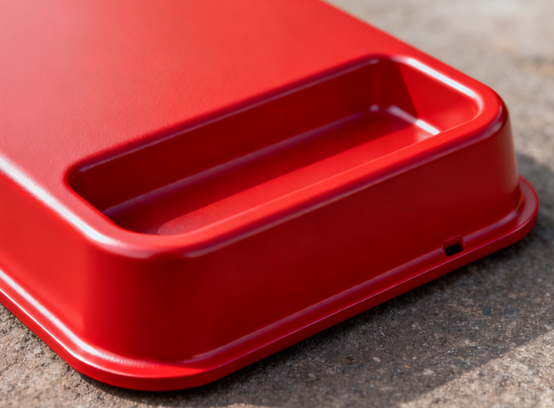
NOBLE’s Powder Coating Surface Finish Service
NOBLE specializes in delivering superior and durable powder coating surface finishes that go beyond mere aesthetics. Our eco-friendly process utilizes electrostatic application and thermal curing to create a tough, uniform shield that is highly resistant to chipping, scratches, corrosion, and harsh chemicals.
We offer a wide range of colors, textures, and specialized formulas—including UV-resistant options for outdoor use—to meet your specific design and functional needs. Committed to excellence from pretreatment to final inspection, we ensure your metal products, from architectural elements to industrial components, receive a finish that guarantees lasting protection and enhanced value.
FAQs of Powder Coating
What is a powder-coated finish?
A powder-coated finish is a high-quality, durable surface treatment applied as a free-flowing, dry powder. Unlike traditional liquid paint, it doesn’t require a solvent.
Is powder coating better than painting?
In most industrial, automotive, and architectural applications, powder coating is considered superior to traditional liquid painting.
Can powder coating be applied over an existing painted surface?
It is generally not recommended. For optimal adhesion and performance, the existing finish must be completely removed through stripping or abrasive blasting before powder coating.
How thick should a powder coat finish be?
A typical powder coat finish is applied at a thickness of 2 to 4 mils (50 to 100 microns). This range is ideal for achieving a smooth, durable coating that resists impact and corrosion without becoming brittle. Specific thickness requirements can vary based on the product’s intended use and the powder formula.
How do you maintain and clean a powder-coated surface?
Regularly clean the surface with a soft cloth and a mild soap or detergent solution. Avoid using abrasive cleaners or solvents that could scratch or degrade the finish.


